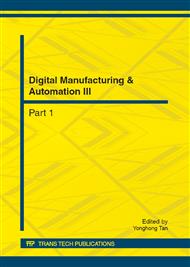p.209
p.213
p.218
p.222
p.227
p.232
p.237
p.241
p.245
Using Contextual Words for Object Detection
Abstract:
Recent work has shown that classification can benefit saliently from the proper use of contextual cues. In this paper, we present a novel framework by using contextual information to improve object detection. After having detected objects and clustered image regions respectively, we make the statistic spatial relationships between candidate objects and sub-regions of the image, which are composed into a vector of features (termed contextual words). Then, the vectors of all candidates are used to train the probabilistic Latent Semantic Analysis (pLSA) model. Finally, SVM classifier is employed in object classification. Furthermore, a new direct graphical model by extending pLSA is proposed to introduce more useful information from previous detection process. The experimental results based on a remote-sensing image dataset show that our performances are quite promising.
Info:
Periodical:
Pages:
227-231
Citation:
Online since:
July 2012
Authors:
Price:
Сopyright:
© 2012 Trans Tech Publications Ltd. All Rights Reserved
Share:
Citation:


